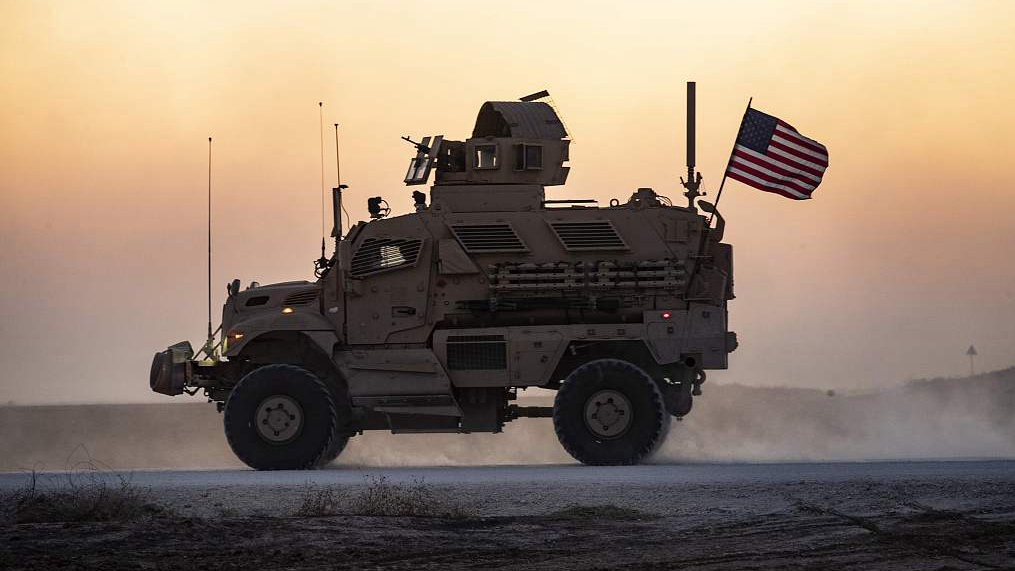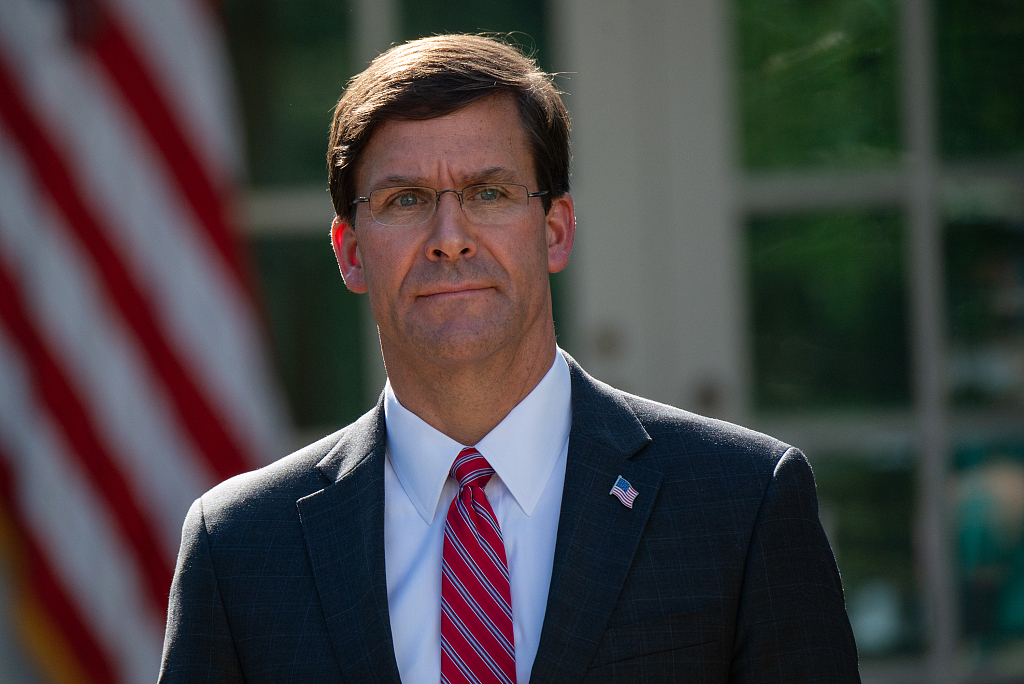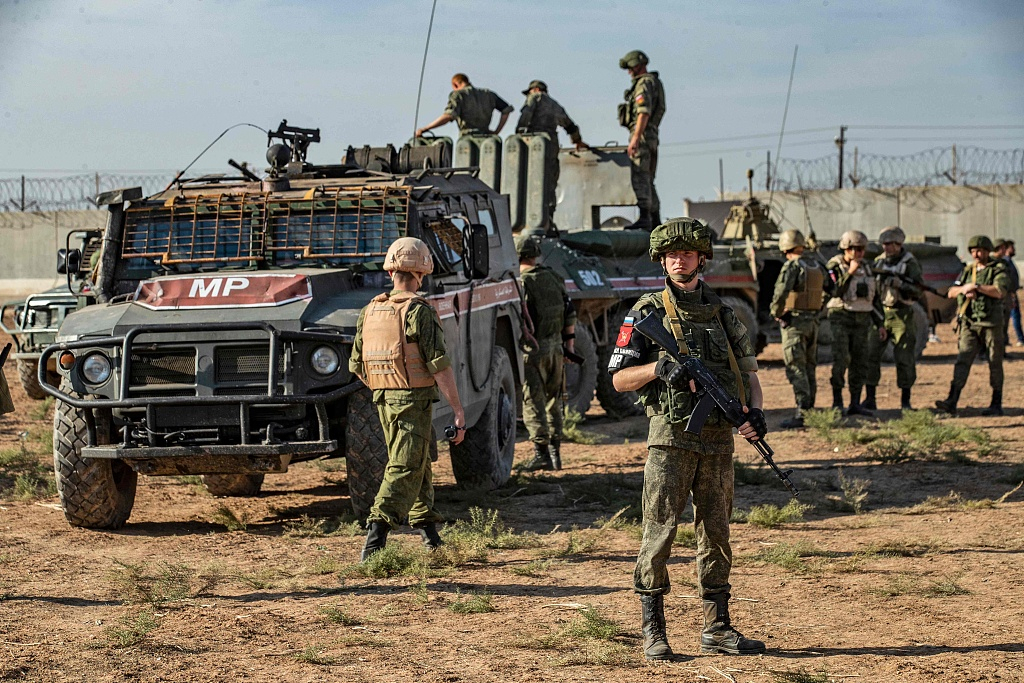
A U.S. military vehicle drives near the town of Tal Tamr in the northeastern Syrian Hasakeh Province on the border with Turkey, November 10, 2019. /VCG Photo
A U.S. military vehicle drives near the town of Tal Tamr in the northeastern Syrian Hasakeh Province on the border with Turkey, November 10, 2019. /VCG Photo
The United States will maintain around 600 troops in Syria, Pentagon chief Mark Esper said Wednesday, despite Donald Trump's desire to end U.S. involvement in what the president calls "endless wars."
"We're still moving troops out of northeastern Syria," the U.S. defense secretary said onboard a plane as he traveled to Seoul, where he will begin a tour of Asia on Thursday. "We're going to have about 500 to 600-ish troops there, at the end of the day."
When asked if that figure included the approximately 200 troops deployed to the Al-Tanf base near the southeastern borders with Jordan and Iraq, Esper said that he was referring to northeastern Syria, where Trump has instructed the Pentagon to secure oil fields. There would be "600-ish" troops across the country, he then reiterated.

U.S. Defense Secretary Mark Esper participates in a ceremony establishing the U.S. Space Command in the Rose Garden of the White House, Washington, August 29, 2019. /VCG Photo
U.S. Defense Secretary Mark Esper participates in a ceremony establishing the U.S. Space Command in the Rose Garden of the White House, Washington, August 29, 2019. /VCG Photo
Esper said that the numbers could fluctuate, particularly if European allies strengthen their presence in the country.
"Things change. Events on the ground change. We could have, for example, partners and allies from Europe joining us," he said. "If they join us on the ground it may allow us the ability to redeploy further U.S. forces out there."
Read more:
U.S. confirms withdrawal of troops from Syria
U.S.' planned withdrawal will reshape the balance of power in Mideast
UNGA: Syria demands 'immediate' withdrawal of U.S., Turkish troops
Trump's abrupt announcement last month that he had ordered a full troop withdrawal drew angry rebukes at home and abroad. Critics said it could allow a resurgence of the ISIL group while leaving U.S.-allied Kurdish fighters in Syria vulnerable to Turkish attacks.
The U.S. president later relented in part, saying he would leave some troops in the region to protect valuable oil fields.

Russian military police take part in a joint Turkish-Russian army patrol near the town of Darbasiyah in Syria's northeastern Hasakeh Province along the Syria-Turkey border, November 11, 2019. /VCG Photo
Russian military police take part in a joint Turkish-Russian army patrol near the town of Darbasiyah in Syria's northeastern Hasakeh Province along the Syria-Turkey border, November 11, 2019. /VCG Photo
Ankara sees the Kurdish People's Protection Units (YPG) as the Syrian offshoot of the outlawed Kurdistan Workers' Party (PKK). On October 9, Turkey launched a military incursion into northern Syria in a bid to drive Kurdish fighters out of the border region, following the pullout of U.S. troops.
The U.S. reached a deal with Turkey on October 17, imposing a five-day ceasefire to allow Kurdish forces to pull back from the planned safe zone that Turkey wants to create in northern Syria to ensure its border security.
On October 22, Turkish President Recep Tayyip Erdogan and his Russian counterpart Vladimir Putin held a meeting in Sochi, Russia, where they agreed on the pullout of the YPG fighters to 30 kilometer south of Turkey's border within 150 hours and conducting joint patrols 10 kilometers from the Turkish border in a region that excludes the city of Qamishli.
Meanwhile, Russia has begun setting up a helicopter base in Qamishli, the Russian Defense Ministry's Zvezda TV channel said on Thursday. The new base will be protected by surface-to-air missile systems, according to the TASS news agency, and three helicopters have already been deployed there.
(With input from agencies)